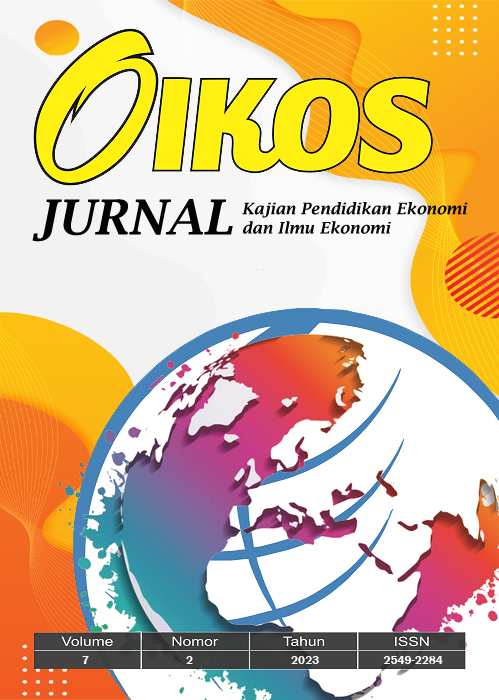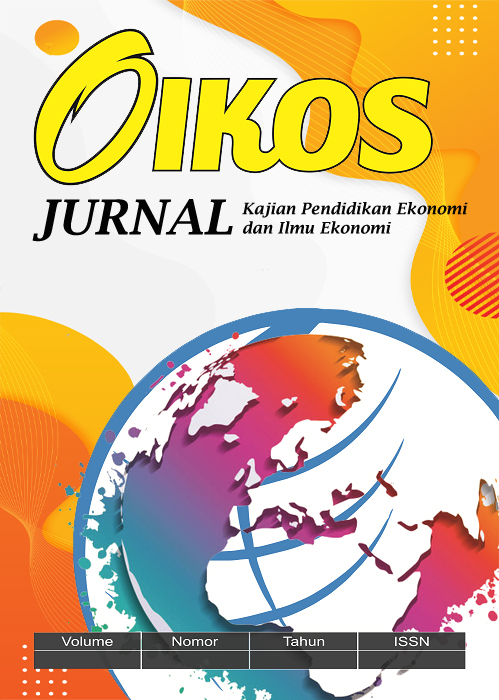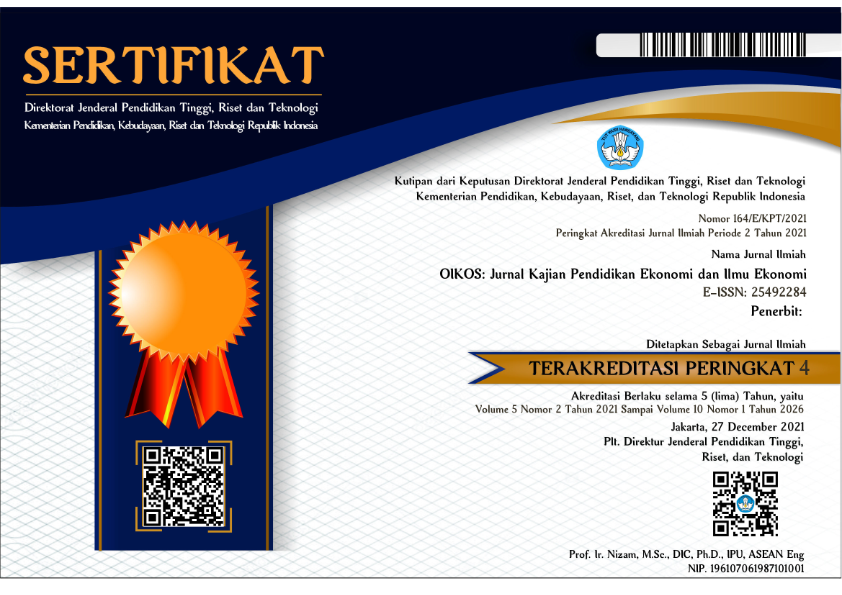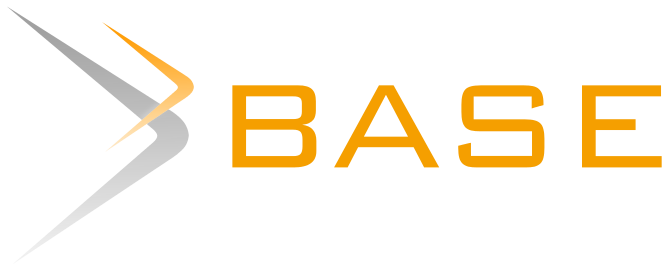THE EFFECT OF APPLICATION OF THE MIND MAPPING METHOD ON ACCOUNTING LEARNING OUTCOMES
DOI:
https://doi.org/10.23969/oikos.v7i2.9145Keywords:
Mind Mapping, Learning Outcomes, AccountingAbstract
This study aims to determine the effect of applying the mind mapping method to learning outcomes in accounting. The research method used is the experimental method. Data collection techniques from this study included participant observation and learning achievement tests. The population in this study were class X students of the Accounting Study Program at Setia Bhakti Vocational High School, Bandung, totaling 54 students with a sample of all students.
The results of this study indicate that there are differences in learning outcomes between the experimental group and learning that applies Mind Mapping and the control group with learning without applying Mind Mapping to accounting learning outcomes. The difference obtained is proven by testing the t-test hypothesis with the results tcount > ttable, where tcount is 2.134 and table is 1.68195.
The implication of the results of this study is that teachers should apply the Mind Mapping learning method in teaching and learning activities in class, because the learning outcomes of Accounting applying Mind Mapping are better than without applying Mind Mapping.
Downloads
References
Alamsyah, M. (2009). Kiat Jitu Meningkatkan Prestasi Dengan Mind Map. Jogjakarta: Mitra Pelajar.
Arikunto. (2012). Dasar-Dasar Evaluasi Pendidikan. Jakarta: PT Bumi Aksara.
Azis. (2015). Statistik Inferesial dalam SPSS. Baubau: Lingkaran Matematika
Buzan, T. (2005). Buku Pintar Mind Map. Jakarat: PT Gramedia Pustaka Utama.
Deporter, B. (2007). Quantum Learning: Membiasakan Belajar Nyaman dan Menyenangkan. Bandung: Penerbit kaifa.
Djamarah, S. B. (2006). Strategi Belajar Mengajar. Jakarta: PT Rineka Cipta.
Fathurrohman, P. (2009). Strategi Belajar Mengajar. Bandung: PT Refika Aditama.Gunawan, A. W. (2004). Born to be Genius. Jakarta: PT Gramedia Pustaka Utama.
Lucy, B. (2012). Dahsyatnya Brain Smart Teaching Cara Super Jitu Optimalkan Kecerdasan Otak dan Prestasi Belajar Anak. Jakarta: Penebar Plus.
Pembelajaran, T. P. (2011). Kurikulum dan Pembelajaran. Bandung: PT Rajagrafindo Persada
Purwanto, N. (2007). Psikologi Pendidikan. Bandung: Sinar Baru Algasindo
Sanjaya, W. (2009). Penelitian Tindakan Kelas. Jakarta: Kencana Prenada Media Group.
Sugiono. (2014). Metode Penelitian Pendidikan. Bandung: Alfabeta.
Sudjana, N. (2005). Dasar-dasar Proses Belajar Mengajar. Bandung: Sinar Baru Algasindo
Sumber Jurnal:
Abdool, C.-A. R. (2013). Using Mind Maps for The Measurement and Improvement of Learning Quality. Caribbean Teaching Scholar, 3.
Meltzer, (2002). The relationship between mathematics preparation and conceptual learning gain in physics: a possible “hidden variable in diagnostic retest scores” american journal physics.
Sumber Peraturan Perundang-undangan dan Dokumen lainnya
SMK Setia Bhakti. (2016). Profil SMK Setia Bhakti. Cimahi: Yayasan Pro Walagri.
Undang-Undang No. 20 tahun 2003 tentang SISDIKNAS
Majalah
Amri, I. S. (2015, Maret). ASEAN adalah kita. Jakarta Pusat, Jakarta, Indonesia.
Artikel Elektronik
Yoga, D. (n.d.). Petunjuk Praktis Untuk Menerapkan Kegiatan Belajar Mengajar Berbasis Mind Map. Retrieved Maret 18, 2017, from www.paxhigh.com: http://www.paxhigh.com/doc/applied_rt-mm.pdf
Downloads
Published
Issue
Section
License
Copyright (c) 2023 Oikos : Jurnal Ekonomi dan Pendidikan Ekonomi

This work is licensed under a Creative Commons Attribution 4.0 International License.









